Improving Outdoor Thermal Comfort in a Steppe Climate: Effect of Water and Trees in an Urban Park
Abstract
:1. Introduction
1.1. The Effect of Trees
1.2. The Effect of Urban Pavement
1.3. The Effect of Water
1.4. Outdoor Thermal Comfort
2. Material and Methods
2.1. Study Area
2.2. Input Parameters for ENVI-Met
- The tree crown geometry (height and diameter of tree);
- Leaf Specifications (Species, foliage albedo and tree calendar);
- The root geometry (form, diameter, depth and area density of root).
Numerical Simulation
- case 1: current scenario (vegetation + water body);
- case 2: no vegetation scenario (water body without vegetation, replaced by bare soil);
- case 3: no water body scenario (vegetation without water body, replaced by granite pavement);
- case 4: soil and granite scenario (without vegetation and water body).
2.3. ENVI-Met Validation
3. Results
3.1. Validation Results
3.2. Investigation of Microclimate Results
3.3. Investigation of Thermal Comfort Results
4. Discussion
- The model presented a high correlation between measured and simulated results, with the RMSE value 0.98 °C for Ta and 5.8 °C for MRT;
- The average air temperature and mean radiant temperature were decreased by 0.5 °C and 22 °C respectively by water body compound with trees on the hottest day of the year;
- According to PET results, the cooling benefits from water body with tree cover in urban areas have a positive effect on human thermal comfort levels from “hot” to “comfortable” sensation in the hottest day of summertime;
- Based on PET index, numerically expressed by 37.5 °C (c4: without all trees and water body) to 23 °C (c1: current situation including all trees and water body) which is around to the comfort zone in the hottest day.
5. Conclusions
Author Contributions
Funding
Institutional Review Board Statement
Informed Consent Statement
Data Availability Statement
Conflicts of Interest
Abbreviations
| PET | Physiological equivalent thermometer |
| PMV | Predicted Mean Vote |
| SET | Standard Effective Temperature |
| UTCI | Universal Thermal Climate Index |
| HVAC | Heating, ventilation, and air conditioning |
| HTC | Human Thermal Comfort |
| hPa | Hectopascal (100 × 1 Pascal) |
| kg | kilogram |
| RMSE | Root Mean Square Error |
| CC | Correlation Coefficient |
| Ta | Air Temperature |
| RH | Relative Humidity |
| MRT | Mean Radiant Temperature |
| °C | Celsius degree |
| m/s | Meter/second |
| UHI | Urban Heat Island |
| HMSs | Heat Mitigation Strategies |
| CFD | Computational Fluid Dynamic |
| LAD | Leaf Area Density |
References
- Population Reference B. Available online: https://www.prb.org/ (accessed on 30 September 2019).
- Kotharkar, R.; Bagade, A.; Ramesh, A. Assessing urban drivers of canopy layer urban heat island: A numerical modeling approach. Landsc. Urban Plan. 2019, 190, 103586. [Google Scholar] [CrossRef]
- Yu, Z.; Yang, G.; Zuo, S.; Jørgensen, G.; Koga, M.; Vejre, H. Critical review on the cooling effect of urban blue-green space: A threshold-size perspective. Urban For. Urban Green. 2020, 49, 126630. [Google Scholar] [CrossRef]
- Mills, G. Urban climatology and urban design. In Proceedings of the 15th International Congress of Biometeorology and International Conference on Urban Climatology, Yokohama, Japan, 29 June 1999. [Google Scholar]
- Lai, D.; Liu, W.; Gan, T.; Liu, K.; Chen, Q. A review of mitigating strategies to improve the thermal environment and thermal comfort in urban outdoor spaces. Sci. Total Environ. 2019, 661, 337–353. [Google Scholar] [CrossRef] [PubMed]
- Ahmed, K.S. Comfort in urban spaces: Defining the boundaries of outdoor thermal comfort for the tropical urban environments. Energy Build. 2003, 35, 103–110. [Google Scholar] [CrossRef]
- Cheng, V.; Ng, E.; Chan, C.; Givoni, B. Outdoor thermal comfort study in a sub-tropical climate: A longitudinal study based in Hong Kong. Int. J. Biometeorol. 2011, 56, 43–56. [Google Scholar] [CrossRef]
- Lau, K.K.-L.; Chung, S.C.; Ren, C. Outdoor thermal comfort in different urban settings of sub-tropical high-density cities: An approach of adopting local climate zone (LCZ) classification. Build. Environ. 2019, 154, 227–238. [Google Scholar] [CrossRef]
- Kong, L.; Lau, K.K.-L.; Yuan, C.; Chen, Y.; Xu, Y.; Ren, C.; Ng, E.Y.Y. Regulation of outdoor thermal comfort by trees in Hong Kong. Sustain. Cities Soc. 2017, 31, 12–25. [Google Scholar] [CrossRef]
- Makaremi, N.; Salleh, E.; Jaafar, M.Z.; GhaffarianHoseini, A. Thermal comfort conditions of shaded outdoor spaces in hot and humid climate of Malaysia. Build. Environ. 2012, 48, 7–14. [Google Scholar] [CrossRef]
- Johansson, E.; Emmanuel, R. The influence of urban design on outdoor thermal comfort in the hot, humid city of Colombo, Sri Lanka. Int. J. Biometeorol. 2006, 51, 119–133. [Google Scholar] [CrossRef]
- Hou, H.; Estoque, R.C. Detecting cooling effect of landscape from composition and configuration: An urban heat island study on hangzhou. Urban For. Urban Green. 2020, 53, 126719. [Google Scholar] [CrossRef]
- Yang, W.; Wong, N.H.; Jusuf, S.K. Thermal comfort in outdoor urban spaces in Singapore. Build. Environ. 2012, 59, 426–435. [Google Scholar] [CrossRef]
- Roth, M.; Lim, V.H. Evaluation of canopy-layer air and mean radiant temperature simulations by a microclimate model over a tropical residential neighbourhood. Build. Environ. 2017, 112, 177–189. [Google Scholar] [CrossRef]
- Koc, C.B.; Osmond, P.; Peters, A. Evaluating the cooling effects of green infrastructure: A systematic review of methods, indicators and data sources. Sol. Energy 2018, 166, 486–508. [Google Scholar] [CrossRef]
- Yan, C.; Guo, Q.; Li, H.; Li, L.; Qiu, G.Y. Quantifying the cooling effect of urban vegetation by mobile traverse method: A local-scale urban heat island study in a subtropical megacity. Build. Environ. 2020, 169, 106541. [Google Scholar] [CrossRef]
- Bowler, D.E.; Buyung-Ali, L.; Knight, T.M.; Pullin, A.S. Urban greening to cool towns and cities: A systematic review of the empirical evidence. Landsc. Urban Plan. 2010, 97, 147–155. [Google Scholar] [CrossRef]
- Aboelata, A.; Sodoudi, S. Evaluating the effect of trees on UHI mitigation and reduction of energy usage in different built up areas in Cairo. Build. Environ. 2019, 168, 106490. [Google Scholar] [CrossRef]
- Aboelata, A. Vegetation in different street orientations of aspect ratio (H/W 1:1) to mitigate UHI and reduce buildings’ energy in arid climate. Build. Environ. 2020, 172, 106712. [Google Scholar] [CrossRef]
- Teshnehdel, S.; Soflaei, F.; Shokouhian, M. Assessment of solar shading performance of courtyard houses in desert climate of Kashan, Iran. Arch. Eng. Des. Manag. 2020, 16, 473–492. [Google Scholar] [CrossRef]
- Teshnehdel, S.; Mirnezami, S.; Saber, A.; Pourzangbar, A.; Olabi, A.G. Data-driven and numerical approaches to predict thermal comfort in traditional courtyards. Sustain. Energy Technol. Assess. 2020, 37, 100569. [Google Scholar] [CrossRef]
- Colter, K.; Middel, A.C.; Martin, C.A. Effects of natural and artificial shade on human thermal comfort in residential neighborhood parks of Phoenix, Arizona, USA. Urban For. Urban Green. 2019, 44, 126429. [Google Scholar] [CrossRef]
- Teshnehdel, S.; Akbari, H.; Di Giuseppe, E.; Brown, R.D. Effect of tree cover and tree species on microclimate and pedestrian comfort in a residential district in Iran. Build. Environ. 2020, 178, 106899. [Google Scholar] [CrossRef]
- Aminipouri, M.; Rayner, D.; Lindberg, F.; Thorsson, S.; Knudby, A.J.; Zickfeld, K.; Middel, A.; Krayenhoff, E.S. Urban tree planting to maintain outdoor thermal comfort under climate change: The case of Vancouver’s local climate zones. Build. Environ. 2019, 158, 226–236. [Google Scholar] [CrossRef]
- Hami, A.; Abdi, B.; Zarehaghi, D.; Bin Maulan, S. Assessing the thermal comfort effects of green spaces: A systematic review of methods, parameters, and plants’ attributes. Sustain. Cities Soc. 2019, 49, 101634. [Google Scholar] [CrossRef]
- Richards, D.R.; Fung, T.K.; Belcher, R.N.; Edwards, P.J. Differential air temperature cooling performance of urban vegetation types in the tropics. Urban For. Urban Green. 2020, 50, 126651. [Google Scholar] [CrossRef]
- Deng, J.; Pickles, B.J.; Smith, S.T.; Shao, L. Infrared radiative performance of urban trees: Spatial distribution and interspecific comparison among ten species in the UK by in-situ spectroscopy. Build. Environ. 2020, 172, 106682. [Google Scholar] [CrossRef]
- Onishi, A.; Cao, X.; Ito, T.; Shi, F.; Imura, H. Evaluating the potential for urban heat-island mitigation by greening parking lots. Urban For. Urban Green. 2010, 9, 323–332. [Google Scholar] [CrossRef]
- Shashua-Bar, L.; Potchter, O.; Bitan, A.; Boltansky, D.; Yaakov, Y. Microclimate modelling of street tree species effects within the varied urban morphology in the Mediterranean city of Tel Aviv, Israel. Int. J. Clim. 2009, 30, 44–57. [Google Scholar] [CrossRef]
- Streiling, S.; Matzarakis, A. Influence of Single and Small Clusters of Trees on the Bioclimate of a City: A Case Study. Arboric. Urban For. 2003, 29, 309–316. [Google Scholar] [CrossRef]
- Abreu-Harbich, L.V.; Labaki, L.; Matzarakis, A. Thermal bioclimate in idealized urban street canyons in Campinas, Brazil. Arch. Meteorol. Geophys. Bioclimatol. Ser. B 2013, 115, 333–340. [Google Scholar] [CrossRef]
- Zhang, L.; Zhan, Q.; Lan, Y. Effects of the tree distribution and species on outdoor environment conditions in a hot summer and cold winter zone: A case study in Wuhan residential quarters. Build. Environ. 2018, 130, 27–39. [Google Scholar] [CrossRef]
- Yang, B.; Olofsson, T.; Nair, G.; Kabanshi, A. Outdoor thermal comfort under subarctic climate of north Sweden—A pilot study in Umeå. Sustain. Cities Soc. 2017, 28, 387–397. [Google Scholar] [CrossRef]
- Gatto, E.; Buccolieri, R.; Aarrevaara, E.; Ippolito, F.; Emmanuel, R.; Perronace, L.; Santiago, J.L. Impact of urban vegetation on outdoor thermal comfort: Comparison between a mediterranean city (Lecce, Italy) and a northern European city (Lahti, Finland). Forests 2020, 11, 228. [Google Scholar] [CrossRef] [Green Version]
- Santamouris, M.; Synnefa, A.; Karlessi, T. Using advanced cool materials in the urban built environment to mitigate heat islands and improve thermal comfort conditions. Sol. Energy 2011, 85, 3085–3102. [Google Scholar] [CrossRef]
- Akbari, H.; Pomerantz, M.; Taha, H. Cool surfaces and shade trees to reduce energy use and improve air quality in urban areas. Sol. Energy 2001, 70, 295–310. [Google Scholar] [CrossRef]
- Akbari, H.; Menon, S.; Rosenfeld, A. Global cooling: Increasing world-wide urban albedos to offset CO2. Clim. Chang. 2008, 94, 275–286. [Google Scholar] [CrossRef]
- Taleghani, M.; Berardi, U. The effect of pavement characteristics on pedestrians’ thermal comfort in Toronto. Urban Clim. 2018, 24, 449–459. [Google Scholar] [CrossRef]
- Xu, J.; Wei, Q.; Huang, X.; Zhu, X.; Li, G. Evaluation of human thermal comfort near urban waterbody during summer. Build. Environ. 2010, 45, 1072–1080. [Google Scholar] [CrossRef]
- Theeuwes, N.E.; Solcerová, A.; Steeneveld, G.J. Modeling the influence of open water surfaces on the summertime temperature and thermal comfort in the city. J. Geophys. Res. Atmos. 2013, 118, 8881–8896. [Google Scholar] [CrossRef] [Green Version]
- Steeneveld, G.; Koopmans, S.; Heusinkveld, B.; Theeuwes, N. Refreshing the role of open water surfaces on mitigating the maximum urban heat island effect. Landsc. Urban Plan. 2014, 121, 92–96. [Google Scholar] [CrossRef]
- Ulpiani, G.; Di Giuseppe, E.; Di Perna, C.; D’Orazio, M.; Zinzi, M. Thermal comfort improvement in urban spaces with water spray systems: Field measurements and survey. Build. Environ. 2019, 156, 46–61. [Google Scholar] [CrossRef]
- Nishimura, N.; Nomura, T.; Iyota, H.; Kimoto, S. Novel water facilities for creation of comfortable urban micrometeorology. Sol. Energy 1998, 64, 197–207. [Google Scholar] [CrossRef]
- Ghiabaklou, Z. Thermal comfort prediction for a new passive cooling system. Build. Environ. 2003, 38, 883–891. [Google Scholar] [CrossRef]
- Belarbi, R.; Ghiaus, C.; Allard, F. Modeling of water spray evaporation: Application to passive cooling of buildings. Sol. Energy 2006, 80, 1540–1552. [Google Scholar] [CrossRef]
- Fanger, P.O. Thermal Comfort, Analysis and Application in Environmental Engineering; Danish Technical Press: Copenhagen, Denmark, 1972; p. 244. [Google Scholar]
- Gagge, A.P. Rational temperature indices of thermal comfort. In Studies in Environmental Science; Elsevier: Amsterdam, The Netherlands, 1981; Volume 10, pp. 79–98. [Google Scholar]
- Höppe, P. The physiological equivalent temperature—A universal index for the biometeorological assessment of the thermal environment. Int. J. Biometeorol. 1999, 43, 71–75. [Google Scholar] [CrossRef] [PubMed]
- Matzarakis, A.; Mayer, H.; Iziomon, M.G. Applications of a universal thermal index: Physiological equivalent temperature. Int. J. Biometeorol. 1999, 43, 76–84. [Google Scholar] [CrossRef]
- Peel, M.C.; Finlayson, B.L.; McMahon, T.A. Updated world map of the Köppen-Geiger climate classification. Hydrol. Earth Syst. Sci. 2007, 11, 1633–1644. [Google Scholar] [CrossRef] [Green Version]
- National Geographical Organization. Available online: https://www.ncc.gov.ir/ (accessed on 15 December 2021).
- Meteorological Organization. Available online: http://www.irimo.ir/eng/index.php (accessed on 4 June 2019).
- Matzarakis, A.; Rutz, F.; Mayer, H. Modelling radiation fluxes in simple and complex environments—Application of the RayMan model. Int. J. Biometeorol. 2007, 51, 323–334. [Google Scholar] [CrossRef]
- ISO. Ergonomics of the Thermal Environment-Instruments for Measuring Physical Quantities; Int Stand Organ: Geneva, Switzerland, 1998; p. 39. [Google Scholar]
- Tan, Z.; Lau, K.K.-L.; Ng, E.Y.Y. Urban tree design approaches for mitigating daytime urban heat island effects in a high-density urban environment. Energy Build. 2016, 114, 265–274. [Google Scholar] [CrossRef]
- Wang, Y.; Akbari, H. The effects of street tree planting on Urban Heat Island mitigation in Montreal. Sustain. Cities Soc. 2016, 27, 122–128. [Google Scholar] [CrossRef]
- Krayenhoff, E.S.; Jiang, T.; Christen, A.; Martilli, A.; Oke, T.R.; Bailey, B.; Nazarian, N.; Voogt, J.A.; Giometto, M.; Stastny, A.; et al. A multi-layer urban canopy meteorological model with trees (BEP-Tree): Street tree impacts on pedestrian-level climate. Urban Clim. 2020, 32, 100590. [Google Scholar] [CrossRef]
- Yang, Y.; Gatto, E.; Gao, Z.; Buccolieri, R.; Morakinyo, T.E.; Lan, H. The “plant evaluation model” for the assessment of the impact of vegetation on outdoor microclimate in the urban environment. Build. Environ. 2019, 159, 106151. [Google Scholar] [CrossRef]
- Lee, H.; Mayer, H.; Chen, L. Contribution of trees and grasslands to the mitigation of human heat stress in a residential district of Freiburg, Southwest Germany. Landsc. Urban Plan. 2016, 148, 37–50. [Google Scholar] [CrossRef]
- Lobaccaro, G.; Acero, J.A. Comparative analysis of green actions to improve outdoor thermal comfort inside typical urban street canyons. Urban Clim. 2015, 14, 251–267. [Google Scholar] [CrossRef]
- Zölch, T.; Rahman, M.A.; Pfleiderer, E.; Wagner, G.; Pauleit, S. Designing public squares with green infrastructure to optimize human thermal comfort. Build. Environ. 2018, 149, 640–654. [Google Scholar] [CrossRef]
- Farhadi, H.; Faizi, M.; Sanaieian, H. Mitigating the urban heat island in a residential area in Tehran: Investigating the role of vegetation, materials, and orientation of buildings. Sustain. Cities Soc. 2019, 46, 101448. [Google Scholar] [CrossRef]
- Jänicke, B.; Meier, F.; Hoelscher, M.-T.; Scherer, D. Evaluating the effects of façade greening on human bioclimate in a complex urban environment. Adv. Meteorol. 2015, 2015, 1–15. [Google Scholar] [CrossRef]
- Forouzandeh, A. Numerical modeling validation for the microclimate thermal condition of semi-closed courtyard spaces between buildings. Sustain. Cities Soc. 2018, 36, 327–345. [Google Scholar] [CrossRef]
- Salata, F.; Golasi, I.; de Lieto Vollaro, R.; de Lieto Vollaro, A. Urban microclimate and outdoor thermal comfort. A proper procedure to fit ENVI-met simulation outputs to experimental data. Sustain. Cities Soc. 2016, 26, 318–343. [Google Scholar] [CrossRef]
- Tsoka, S.; Tsikaloudaki, K.; Theodosiou, T. Analyzing the ENVI-met microclimate model’s performance and assessing cool materials and urban vegetation applications—A review. Sustain. Cities Soc. 2018, 43, 55–76. [Google Scholar] [CrossRef]
- Zhang, J.; Gou, Z. Tree crowns and their associated summertime microclimatic adjustment and thermal comfort improvement in urban parks in a subtropical city of China. Urban For. Urban Green. 2020, 59, 126912. [Google Scholar] [CrossRef]
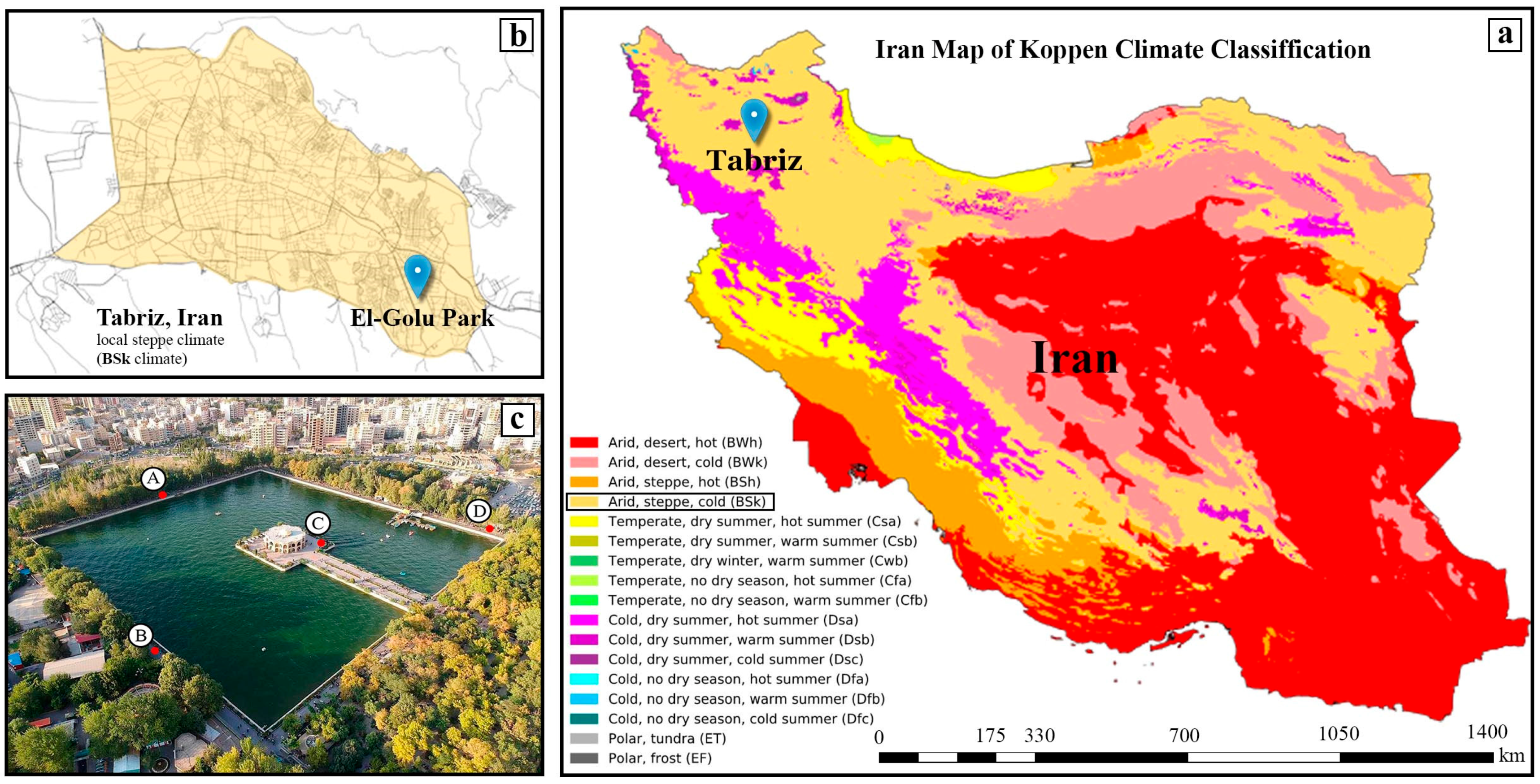

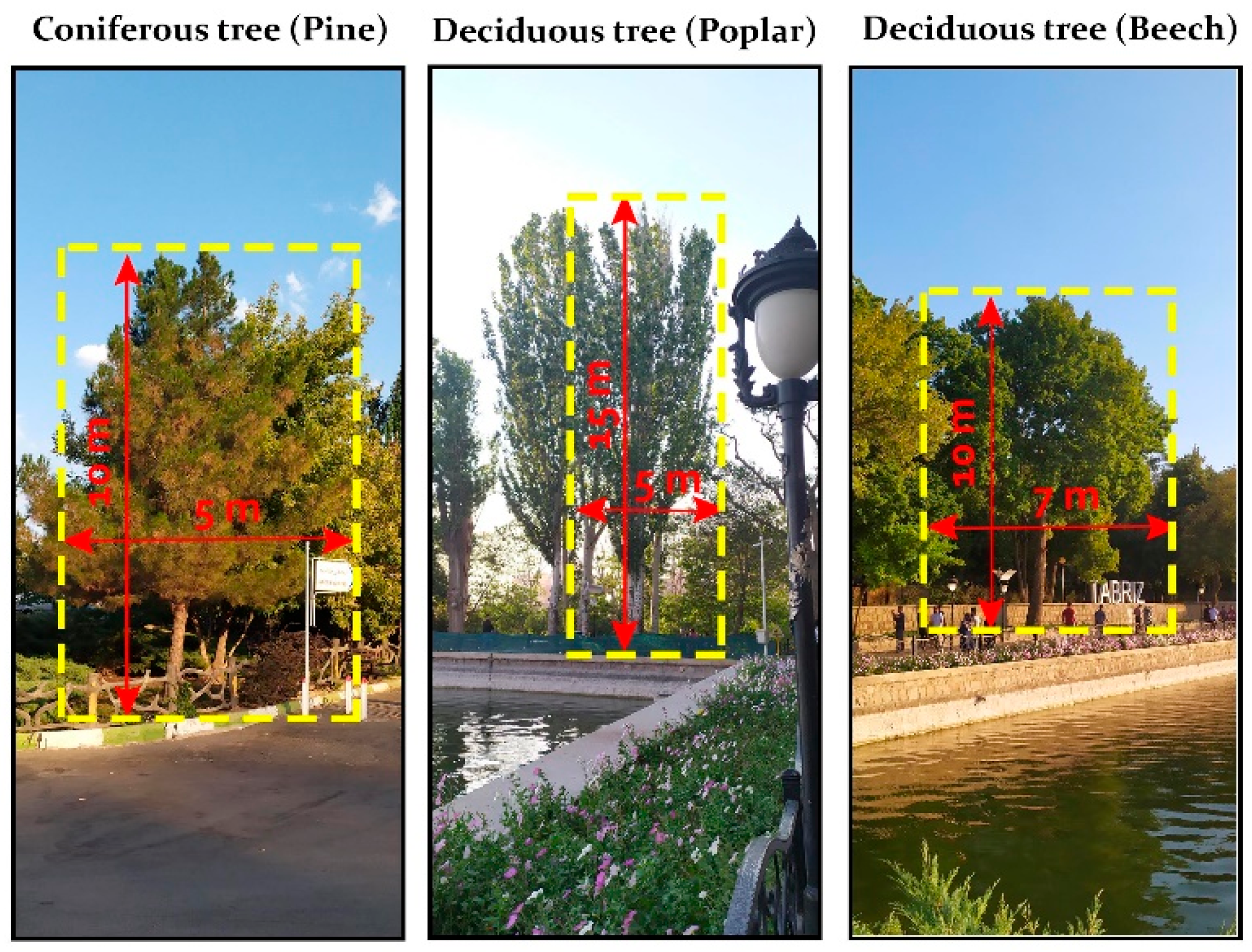

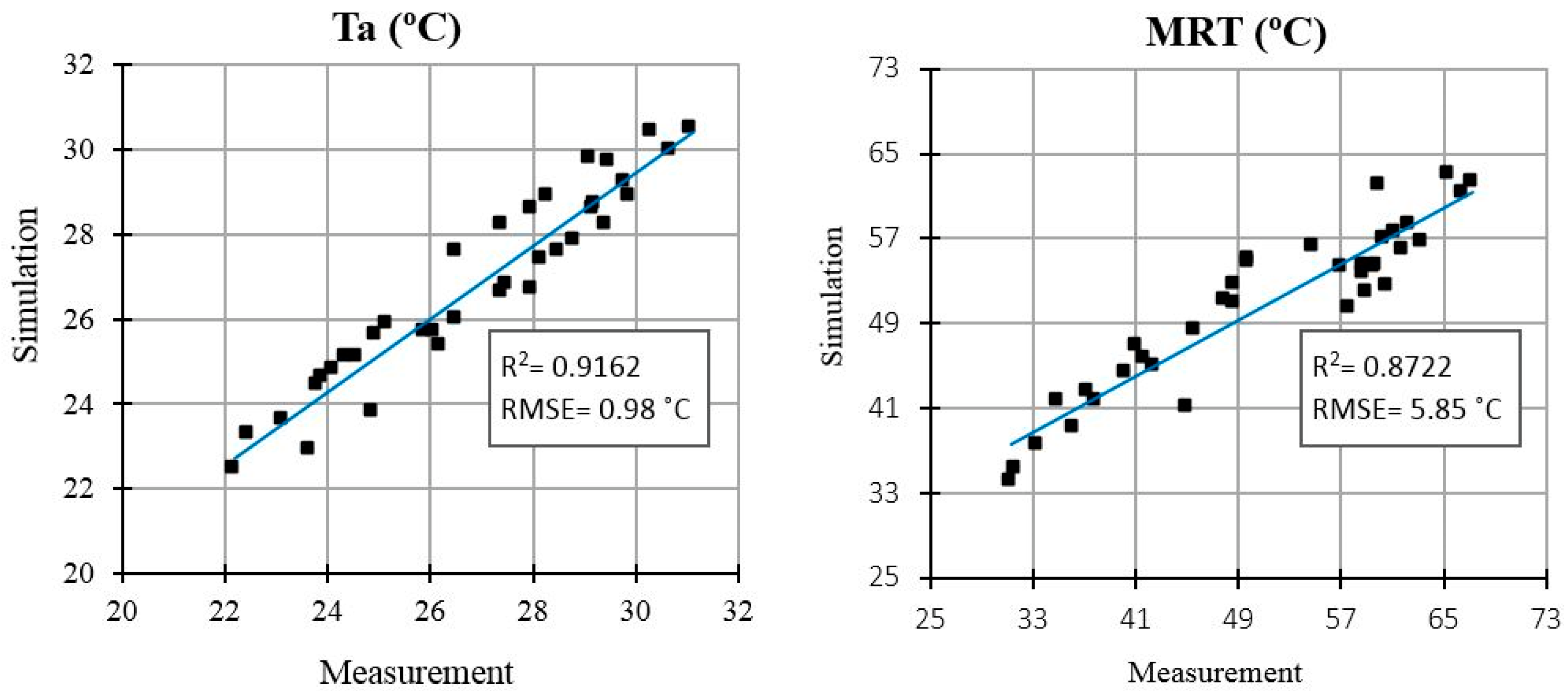


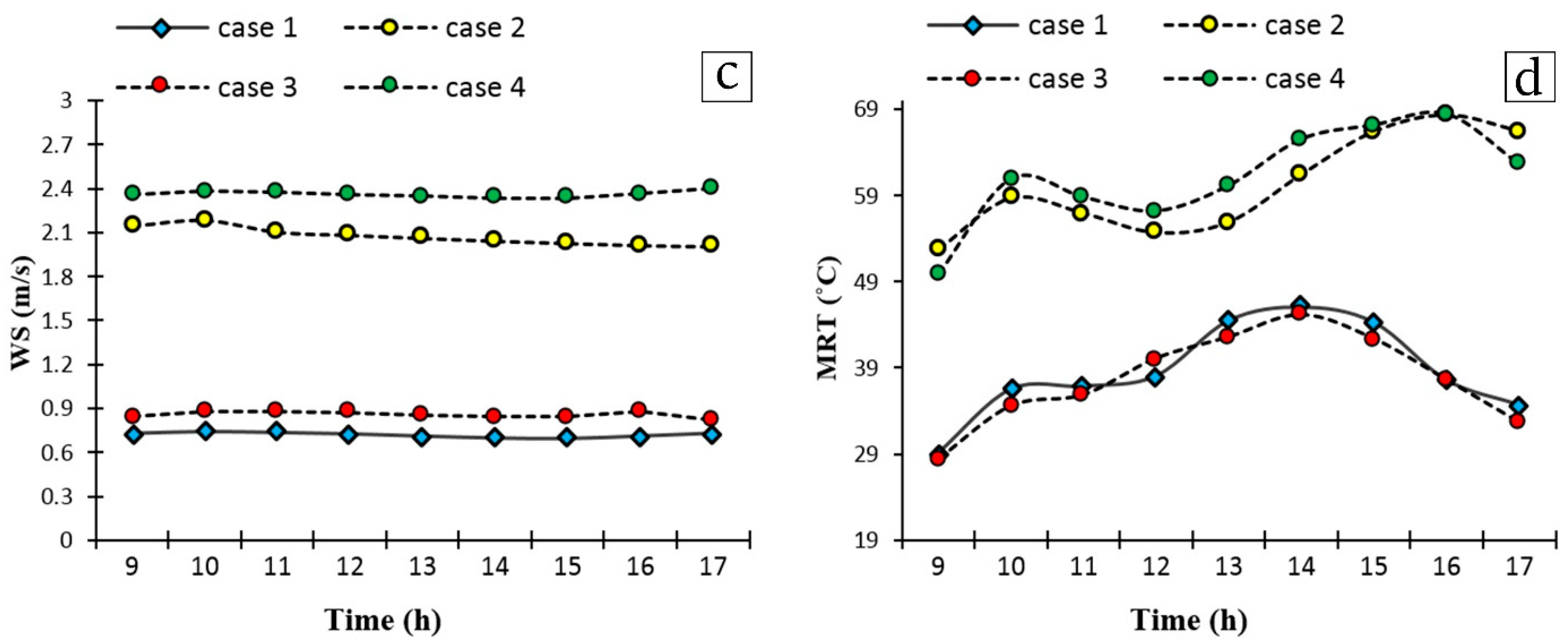

| Thermal Perception | PET | |
|---|---|---|
| Very cold (Extreme cold stress) | <4 | |
| Cold (Strong cold stress) | 4–8 | |
| Cool (Moderate cold stress) | 8–13 | |
| Slightly cold (Slight cold stress) | 13–18 | |
| Comfortable (Neutral) | 18–23 | |
| Slightly warm (Slight heat stress) | 23–29 | |
| Warm (Moderate heat stress) | 29–35 | |
| Hot (Strong heat stress) | 35–41 | |
| Very hot (Extreme heat stress) | >41 |
| Simulations input | Tabriz (38°8′ N 48°15′ E) |
| Simulation day | 28 July 2019 |
| Meteorological data | |
| Ta at 1.5 m (°C) | 32.2 |
| RH at 1.5 m (%) | 28.3 |
| Wind Speed (m/s) | 6.7 |
| Wind Direction (degree from N) | 188 |
| Cloud coverage | 0.0 |
| Soil data | |
| Initial temperature (°C) upper layer (0–20 cm) | 33.1 |
| Initial temperature (°C) middle layer (20–50 cm) | 33.1 |
| Initial temperature (°C) deep layer (below 50 cm) | 32.4 |
| Relative humidity (%) upper layer (0–20 cm) | 24.0 |
| Relative humidity (%) middle layer (20–50 cm) | 22.4 |
| Relative humidity (%)deep layer (below 50 cm) | 20.8 |
| Asphalt Albedo | 0.15 |
| Granite Pavement Gray Albedo | 0.20 |
| Water Albedo | 0.05 |
| Building inputs | |
| Wall (Brick) Albedo | 0.30 |
| Roof Albedo | 0.20 |
| Trees information | Table 3 |
| Crown geometry | Simulation Trees Scenarios | ||
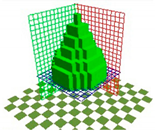 | 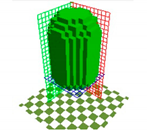 | 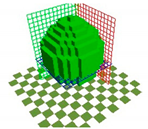 | |
| Trees species | Coniferous tree (Pine) | Deciduous tree (Poplar) | Deciduous tree (Beech) |
| Height | 10 | 15 | 10 |
| Diameter | 5 | 5 | 7 |
| Albedo | 0.18 | 0.3 | 0.2 |
| LAD (July) | 1.0 | 1.0 | 1.0 |
| Number of trees | 28 | 214 | 175 |
| Simulation of Land Use | Current Scenario (Case 1) | No Vegetation Scenario (Case 2) | No Water Body Scenario (Case 3) | Soil and Granite Scenario (Case 4) |
|---|---|---|---|---|
| Water surface | 27% | 27% | - | 0% |
| Asphalt surface | 13% | 13% | 13% | 13% |
| Building | 3% | 3% | 3% | 3% |
| Granite pavement | 21% | 21% | 48% | 48% |
| Soil | - | 36% | - | 36% |
| Overall area of tree cover | 36% | - | 36% | - |
| Sensor Type | Variable | Measuring Range | Accuracy | Output Resolution | Measuring Rate |
|---|---|---|---|---|---|
| Testo 480 | Ta | −10 to +50 °C | ±0.5 °C | 0.1 °C | 1 min |
| Testo 480 | RH | 0 to 100%RH | ±2.5%RH (5 to 95%RH) | 0.1%RH | 1 min |
| Testo 480, Globe probe 0602 0743 (D = 150 mm) | Black globe temperature | 0 to +120 °C | 22 °C, ±1 digit | Output Resolution | 1 min |
| 09:00 | 10:00 | 11:00 | 12:00 | 13:00 | 14:00 | 15:00 | 16:00 | 17:00 | |
|---|---|---|---|---|---|---|---|---|---|
| Case 1 | 14.3 | 18.6 | 21.7 | 24.5 | 28.1 | 31.6 | 31.7 | 25.5 | 18.2 |
| Case 2 | 24.3 | 28 | 30.5 | 31.6 | 33.4 | 43.5 | 47 | 40.9 | 34.9 |
| Case 3 | 15.7 | 20.3 | 23.3 | 27.3 | 31.3 | 35.2 | 39.2 | 28.1 | 20.1 |
| Case 4 | 26.5 | 31.4 | 33.5 | 35.1 | 39.5 | 46.8 | 49.4 | 40.4 | 37.9 |
Publisher’s Note: MDPI stays neutral with regard to jurisdictional claims in published maps and institutional affiliations. |
© 2022 by the authors. Licensee MDPI, Basel, Switzerland. This article is an open access article distributed under the terms and conditions of the Creative Commons Attribution (CC BY) license (https://creativecommons.org/licenses/by/4.0/).
Share and Cite
Teshnehdel, S.; Gatto, E.; Li, D.; Brown, R.D. Improving Outdoor Thermal Comfort in a Steppe Climate: Effect of Water and Trees in an Urban Park. Land 2022, 11, 431. https://doi.org/10.3390/land11030431
Teshnehdel S, Gatto E, Li D, Brown RD. Improving Outdoor Thermal Comfort in a Steppe Climate: Effect of Water and Trees in an Urban Park. Land. 2022; 11(3):431. https://doi.org/10.3390/land11030431
Chicago/Turabian StyleTeshnehdel, Saeid, Elisa Gatto, Dongying Li, and Robert D. Brown. 2022. "Improving Outdoor Thermal Comfort in a Steppe Climate: Effect of Water and Trees in an Urban Park" Land 11, no. 3: 431. https://doi.org/10.3390/land11030431
APA StyleTeshnehdel, S., Gatto, E., Li, D., & Brown, R. D. (2022). Improving Outdoor Thermal Comfort in a Steppe Climate: Effect of Water and Trees in an Urban Park. Land, 11(3), 431. https://doi.org/10.3390/land11030431







